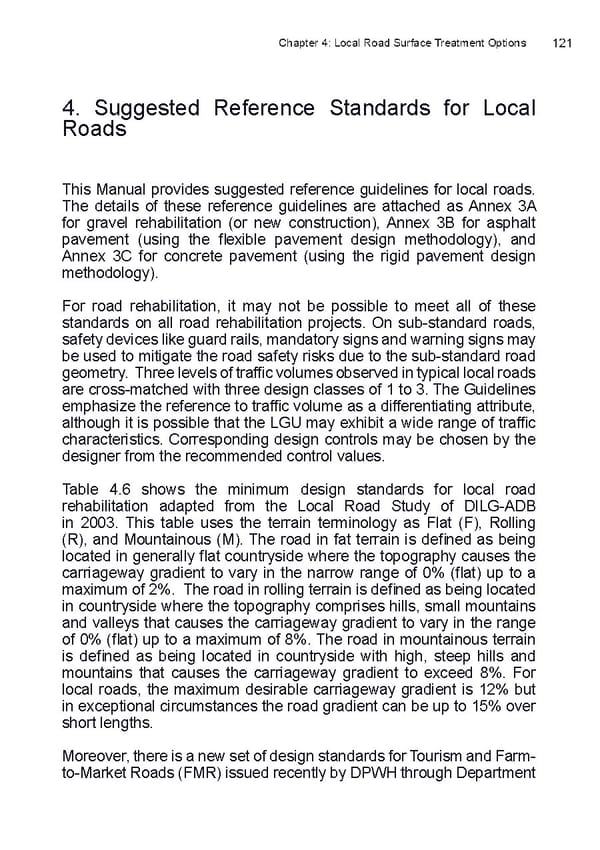Chapter 4: Local Road Surface Treatment Options 121 4. Suggested Reference Standards for Local Roads This Manual provides suggested reference guidelines for local roads. The details of these reference guidelines are attached as Annex 3A for gravel rehabilitation (or new construction), Annex 3B for asphalt pavement (using the flexible pavement design methodology), and Annex 3C for concrete pavement (using the rigid pavement design methodology). For road rehabilitation, it may not be possible to meet all of these standards on all road rehabilitation projects. On sub-standard roads, safety devices like guard rails, mandatory signs and warning signs may be used to mitigate the road safety risks due to the sub-standard road geometry. Three levels of traffic volumes observed in typical local roads are cross-matched with three design classes of 1 to 3. The Guidelines emphasize the reference to traffic volume as a differentiating attribute, although it is possible that the LGU may exhibit a wide range of traffic characteristics. Corresponding design controls may be chosen by the designer from the recommended control values. Table 4.6 shows the minimum design standards for local road rehabilitation adapted from the Local Road Study of DILG-ADB in 2003. This table uses the terrain terminology as Flat (F), Rolling (R), and Mountainous (M). The road in fat terrain is defined as being located in generally flat countryside where the topography causes the carriageway gradient to vary in the narrow range of 0% (flat) up to a maximum of 2%. The road in rolling terrain is defined as being located in countryside where the topography comprises hills, small mountains and valleys that causes the carriageway gradient to vary in the range of 0% (flat) up to a maximum of 8%. The road in mountainous terrain is defined as being located in countryside with high, steep hills and mountains that causes the carriageway gradient to exceed 8%. For local roads, the maximum desirable carriageway gradient is 12% but in exceptional circumstances the road gradient can be up to 15% over short lengths. Moreover, there is a new set of design standards for Tourism and Farm- to-Market Roads (FMR) issued recently by DPWH through Department
 Local Road Management Manual Page 121 Page 123
Local Road Management Manual Page 121 Page 123